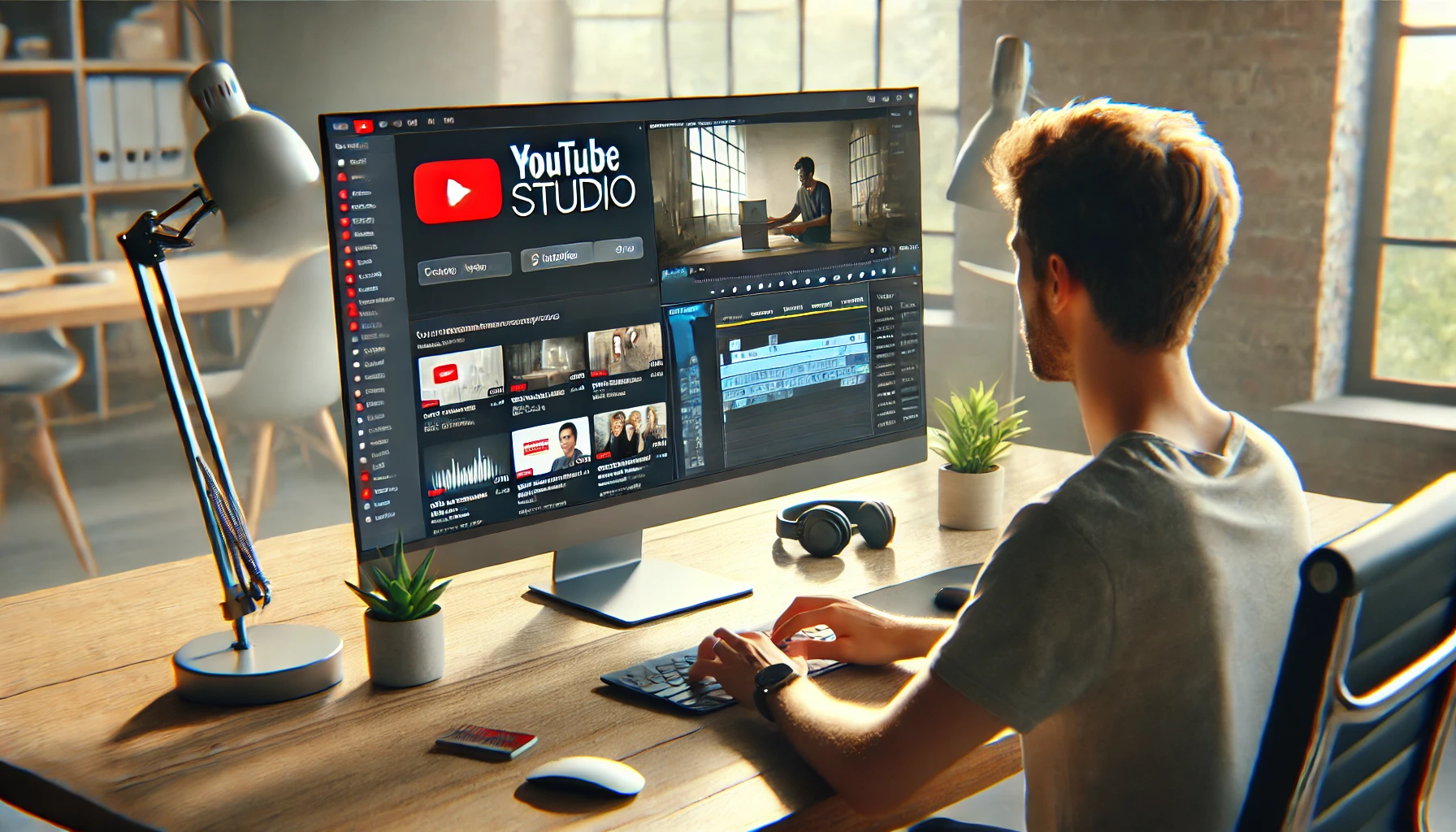🔍 WHY KEYWORDS, DESCRIPTIONS, SUBTITLES, AND TRANSCRIPTIONS MATTER
Many content creators underestimate the power of video descriptions, accurate transcriptions, and well-researched keywords. While it’s easy to focus solely on creating engaging content, understanding how these elements work together is essential for long-term growth and visibility on YouTube.
YouTube’s algorithm doesn’t automatically know who to show your videos to—it relies on data. This data comes from your titles, descriptions, tags, subtitles, and even the words you speak in your video. Optimizing these areas gives YouTube the context it needs to recommend your content to the right audience.
🏷️ WHAT ARE KEYWORDS AND WHY ARE THEY SO IMPORTANT?
Keywords are the words and phrases people type into search engines (like YouTube and Google) to find content. They are the bridge between what people are searching for and the content you create. When used effectively, keywords help YouTube understand your video’s topic and match it with users who are interested in that content.
For example, if someone searches for “how to make soy milk at home,” YouTube scans videos for that phrase in titles, descriptions, tags, and even the spoken words within the video. If your content contains that keyword in these areas, YouTube is more likely to suggest it.
📚 WHERE DO KEYWORDS COME FROM?
➤ YOUTUBE SEARCH SUGGESTIONS: Start typing a topic in the YouTube search bar and see what autocomplete suggests—those are popular keywords.
➤ GOOGLE TRENDS: This tool shows what topics are trending and how interest in them changes over time.
➤ KEYWORD RESEARCH TOOLS: Tools like TubeBuddy, VidIQ, and KeywordTool.io help discover what keywords are popular in your niche.
➤ COMPETITOR ANALYSIS: Look at successful videos in your niche and examine the keywords they use in titles and descriptions.
✍️ HOW TO ADD KEYWORDS TO YOUR VIDEOS
- VIDEO TITLE: Include your primary keyword in the title to make it clear what your video is about. Example: “How to Make Soy Milk at Home | Easy Soyabella Recipe”
- VIDEO DESCRIPTION: Use relevant keywords naturally in the first two lines of your description.
- TAGS (YOUTUBE STUDIO): Add specific keywords in the Tags section of YouTube Studio to clarify your video’s topic.
- SPOKEN CONTENT: Say important keywords out loud in your video. YouTube’s auto-captions pick up spoken words, and accurate transcriptions ensure they are recognized.
- CLOSED CAPTIONS AND SUBTITLES: Upload or edit subtitles to make sure spoken keywords are correctly transcribed.
- HASHTAGS: Use hashtags in your description and title to help categorize your video.
🤖 HOW YOUTUBE’S ALGORITHM USES KEYWORDS, DESCRIPTIONS, AND TRANSCRIPTIONS
Every word in your video description, tags, and spoken content (captured through captions or transcriptions) is analyzed by YouTube. This information helps the algorithm match your videos with the right audience.
➤ KEYWORD RELEVANCE: YouTube scans titles, descriptions, and tags for keywords to understand your video’s topic.
➤ CONTENT CATEGORIZATION: Keywords help YouTube place your video in the right category for discovery.
➤ SEARCH VISIBILITY: Optimized videos rank higher in search results because YouTube pulls data from your title, description, and captions.
➤ SEO BEYOND YOUTUBE: A well-optimized description can also improve your visibility in Google search results.
📝 THE POWER OF ACCURATE TRANSCRIPTIONS AND SUBTITLES
Accurate captions and transcriptions are just as critical as the video description. YouTube’s auto-generated captions often contain errors, especially when dealing with accents, background noise, or technical terms. Uploading a custom transcript or editing auto-captions ensures every keyword is properly indexed.
➤ EVERY WORD IS SEARCHABLE: YouTube indexes every spoken word, making it crucial that your content is transcribed accurately.
➤ ACCESSIBILITY IMPROVES ENGAGEMENT: Correct captions make videos more accessible, helping viewers who are deaf, hard of hearing, or non-native speakers engage more fully.
🌍 THE IMPACT OF ACCENTS ON TRANSCRIPTIONS
Creators who speak with accents—or those who speak quickly or use slang—often experience errors in YouTube’s auto-generated captions.
➤ SEO IMPACT: Incorrect transcriptions mean missed keywords, which can lower search visibility.
➤ VIEWER EXPERIENCE: Poor captions frustrate viewers and harm your channel’s professionalism.
➤ ALGORITHM MISINTERPRETATION: If YouTube misreads your content, it may recommend it to the wrong audience—or not at all.
🛠️ HOW TO FIX AND OPTIMIZE TRANSCRIPTIONS
- REVIEW AUTO-CAPTIONS: Check and correct YouTube’s auto-generated captions for accuracy.
- EDIT CAPTIONS IN YOUTUBE STUDIO: Use the Subtitles tab in YouTube Studio to fix any errors.
- UPLOAD CUSTOM TRANSCRIPTS: Upload an edited transcript to ensure accuracy.
- USE CAPTIONING TOOLS: Tools like Descript, Rev, or Otter.ai help generate accurate captions.
📊 WHY EVEN SUCCESSFUL CHANNELS CAN BENEFIT FROM OPTIMIZATION
Some successful creators neglect their descriptions and captions but continue to grow due to their established audience. However, they succeed despite this—not because of it. For small and growing channels, optimizing keywords, descriptions, and transcriptions is essential for discovery and growth.
🚀 FINAL THOUGHTS
Video descriptions, accurate transcriptions, and effective keyword use are essential for YouTube success. These tools provide YouTube’s algorithm with the context it needs to recommend your content to the right audience.
Without proper keywords and optimized descriptions, your video might never reach the viewers who need it most. Every word—spoken or written—helps YouTube understand and distribute your content.
Even small improvements in how you use keywords and optimize descriptions can lead to significant growth.
🎥 For more help creating optimized descriptions, keywords, and titles, check out my video:
👉 NotebookLM for Content Creators: YouTube Descriptions, Titles & Keywords in 5 Minutes


